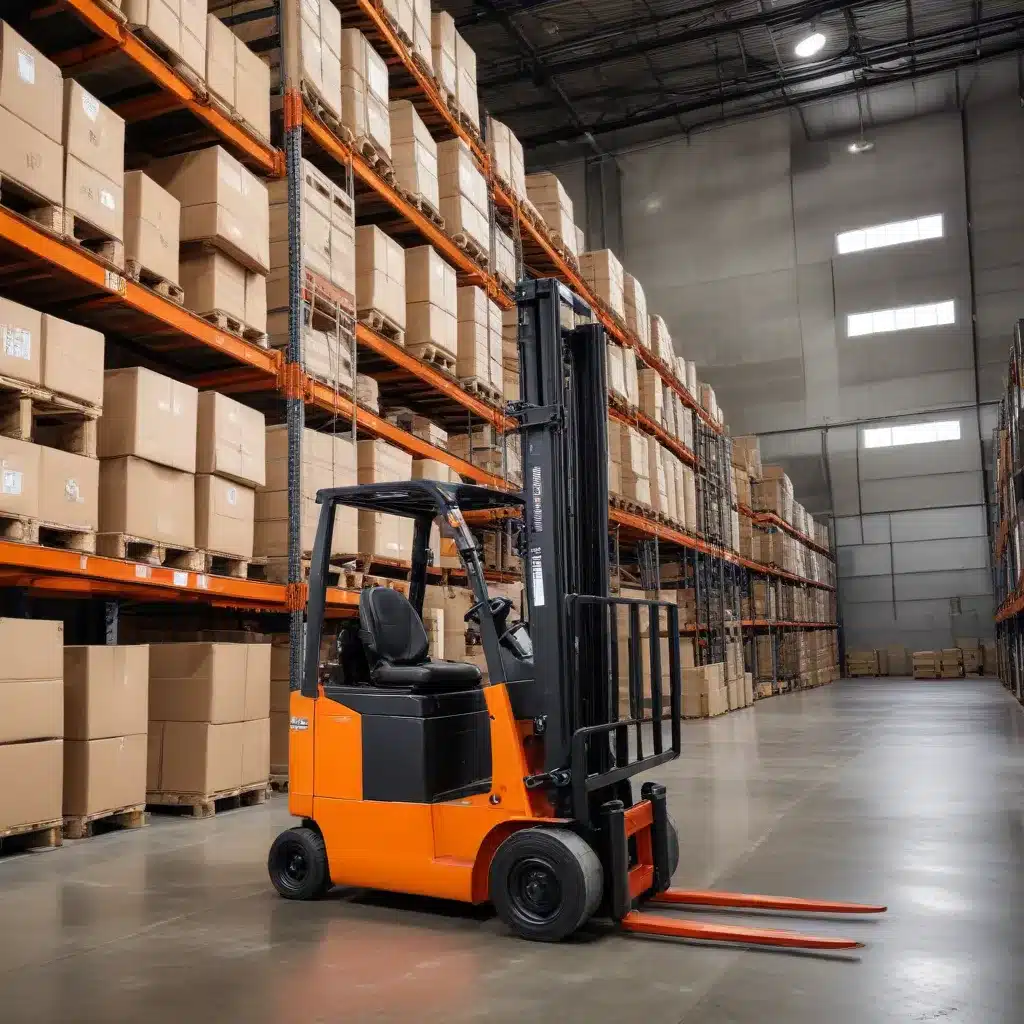
The Rise of Warehouse Electrification
The transportation industry is undergoing a remarkable transformation, thanks to the increasing adoption of electrification. This shift towards electric vehicles (EVs) has impacted various sectors, including the warehousing and logistics landscape. As the industry evolves, a palpable shift towards sustainable and efficient practices has emerged, with electrification standing at the forefront of this transformation.
The benefits of electrification in warehousing operations are multifaceted, promising tangible advantages that cater to both the environment and the bottom line. From enhanced performance and reduced operational costs to a quieter work environment and lower maintenance requirements, the transition to electric-powered vehicles and systems is a strategic move that is redefining the modern warehousing landscape.
The Game-Changing Impact of Electric Forklifts
At the heart of this electrification revolution are electric forklifts, which have emerged as a game-changer in warehouse operations. These vehicles offer several advantages over their conventional, internal combustion engine (ICE) counterparts.
Improved Performance and Efficiency
Electric forklifts boast enhanced performance, allowing for smoother and more precise movements. They provide a level of maneuverability that surpasses their ICE counterparts, enabling operators to navigate tight spaces and narrow aisles with ease. This increased efficiency translates to improved productivity and streamlined warehouse operations.
Reduced Operating Costs
One of the key benefits of electric forklifts is their lower operating costs. Since they do not require fossil fuels, the ongoing fuel expenses associated with traditional forklifts are significantly reduced. Additionally, electric forklifts have fewer maintenance requirements, further contributing to the overall cost savings.
Quieter and Cleaner Work Environment
Electric forklifts generate much lower noise levels compared to their ICE counterparts, creating a quieter and more comfortable work environment. This improved acoustic environment enhances communication and safety on the warehouse floor, as workers can better hear alarms and warnings. Furthermore, the absence of exhaust emissions contributes to a cleaner and healthier work environment, aligning with sustainability goals and reducing the risk of respiratory issues for employees.
Environmental Sustainability
The transition to electric forklifts is a significant step towards reducing the environmental impact of warehousing operations. Unlike their propane or diesel-powered counterparts, electric forklifts produce zero emissions at the point of use, eliminating the release of greenhouse gases and other pollutants. This shift towards cleaner material handling equipment helps businesses reduce their carbon footprint and meet increasingly stringent emissions regulations.
Maximizing the Cost-Saving Potential of Electric Forklifts
While the initial acquisition cost of electric forklifts may be higher than their ICE counterparts, the long-term cost savings and return on investment (ROI) make them a compelling choice for warehouse operators.
Analyzing the Total Cost of Ownership (TCO)
When evaluating the cost of electric forklifts, it’s essential to consider the total cost of ownership (TCO) rather than just the upfront purchase price. Although electric forklifts have a higher initial cost, they offer significant savings in fuel and maintenance expenses over the lifespan of the vehicle. Electricity generally costs less per hour of operation than propane or diesel, resulting in lower energy costs. Additionally, with fewer moving parts, electric forklifts require less frequent maintenance, reducing downtime and repair costs.
Exploring Electrification Incentives
To help offset the initial investment, some states and municipalities offer electrification incentives for businesses transitioning to electric forklifts. These cash incentives can provide a valuable boost, making the switch to electric material handling equipment more financially accessible.
Maximizing Battery Efficiency and Charging Strategies
Proper battery management and charging strategies are crucial for optimizing the cost-saving potential of electric forklifts. Factors such as battery capacity, charging times, and shift patterns must be carefully considered to ensure maximum productivity and minimize downtime. By selecting the right battery solution and implementing efficient charging practices, warehouse operators can further enhance the financial benefits of their electric forklift fleet.
Embracing the Future of Warehouse Electrification
As the warehousing industry continues to evolve, the shift towards electric forklifts is gaining momentum. Businesses that embrace this transition are not only reducing their environmental impact but also reaping the financial rewards of lower operating costs and improved efficiency.
By leveraging the advantages of electric forklifts, warehouse operators can position their operations for long-term success. The combination of enhanced performance, reduced maintenance requirements, and a cleaner, quieter work environment creates a compelling case for the widespread adoption of electric material handling equipment.
To learn more about the cost-saving potential of electric forklifts and how they can transform your Forklift Reviews operations, explore the resources available on our website or contact our team of industry experts.
Maximizing Sustainability and Efficiency with Raymond Electric Forklifts
One forklift company that has invested in new technologies to help maximize your organization’s energy efficiency without sacrificing performance is The Raymond Corporation. Their 80-volt 4800 and 4810 sit-down counterbalanced trucks, with up to 11,000 lbs. capacity, are designed for outdoor applications. They offer a reliable, comfortable, and sustainable alternative to propane, gas, or diesel-powered forklifts.
These state-of-the-art electric forklifts from Raymond provide the power and dependability needed to excel in a wide variety of material handling applications, all while reducing your carbon footprint and operational costs. With flexible solutions to suit your needs and budget, including rentals, leases, and used options, Raymond can help you navigate the transition to electric forklifts seamlessly.
Conclusion
The warehousing industry is at the forefront of a remarkable transformation, with electrification playing a pivotal role in shaping the future of material handling. Electric forklifts, with their superior performance, lower operating costs, and environmental benefits, are redefining the way goods are stored, moved, and managed within warehouses.
By embracing the cost-saving potential of electric forklifts, warehouse operators can not only enhance their operational efficiency but also contribute to a more sustainable and eco-friendly logistics ecosystem. As the industry continues to evolve, the adoption of electric material handling equipment will undoubtedly be a key driver in optimizing warehousing operations, reducing environmental impact, and securing long-term financial success.

